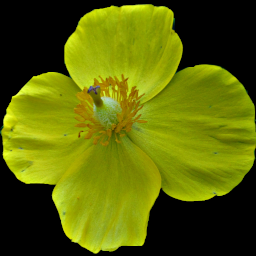One of our most magnificent spring displays, these trees have flowers that are actually heads of insignificant greenish flowers surrounded by four white bracts that look like flower petals. The wild ones are usually white or barely tinged with pink; cultivated varieties in pink and nearly red have been developed. This tree was blooming in early May on a wooded hillside in Schenley Park.
Gray describes the genus and the species:
CORNUS [Tourn.] L. CORNEL. DOGWOOD. Flowers perfect (or in some foreign species dioecious). Calyx minutely 4-toothed. Petals 4, oblong, spreading. Stamens 4; filaments slender. Style slender ; stigma terminal, flat or capitate. Drupe small, with a 2-celled and 2-seeded stone. — Leaves opposite (except in one species), entire. Flowers small, in open naked cymes, or in close heads surrounded by a corolla-like involucre. (Name from cornu, a horn; alluding to the hardness of the wood.)
Flowers greenish or purple in a close cluster, surrounded by a showy usually 4-bracted corolla-like white or pinkish involucre; fruit bright red.
С. florida L. (FLOWERING D.) Tree, 4-12 m. high; leaves ovate, pointed, acutish at the base; bracts of the involucre obcordate, 3-6 cm. long; fruit ovoid. — Dry woods, from s. Me. to Ont. and s. Minn., s. to Fla. and Tex. May, June, — Very showy in flower, scarcely less so in fruit.







